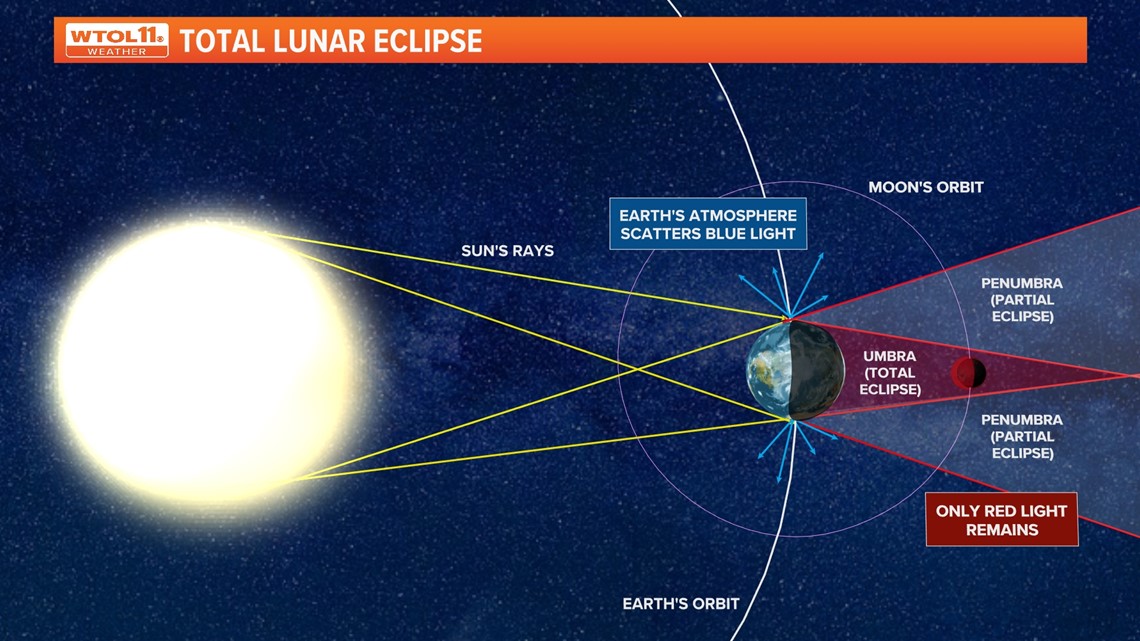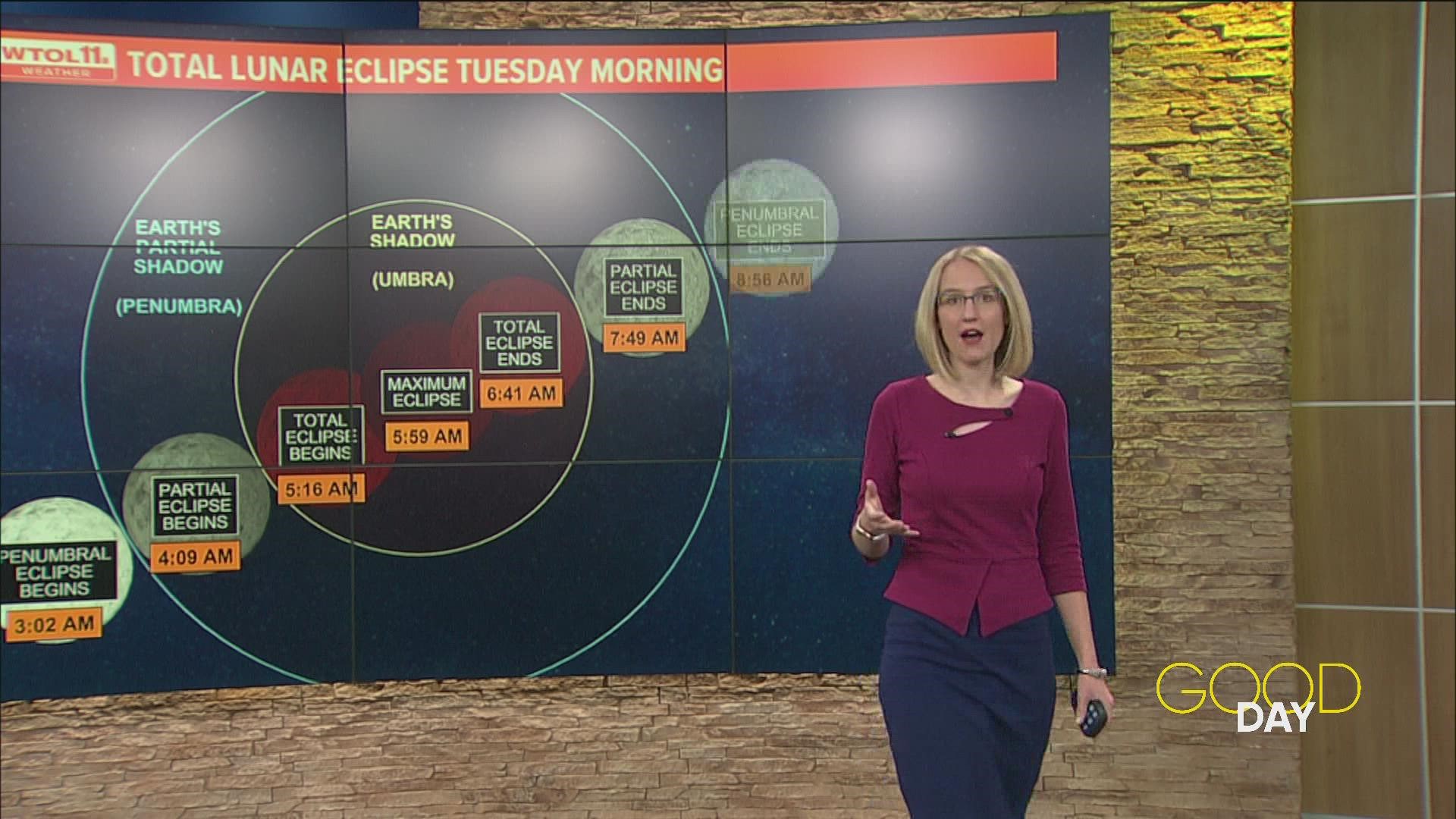TOLEDO, Ohio — On Tuesday, the only total lunar eclipse of 2022 will land on election day -- a first in U.S. history. As long as the weather permits, the night sky on Nov. 8 will display the final total lunar eclipse until 2025.
In most of North America the event will be visible, meaning people across the U.S., including northwest Ohio and southeast Michigan, can witness the moon as it is fully eclipsed by the Earth's shadow.
To see the entire eclipse, you may need to stay up late, or wake up very early. In northwest Ohio, the eclipse will be visible beginning Tuesday, Nov. 8 at 3:02 a.m. and end the same day at 8:56 a.m. It will reach its maximum at 5:59 a.m.


Eclipse visibility is dependent on the forecast. The WTOL 11 Weather team is not predicting any precipitation overnight Monday and into Tuesday, but intermittent cloud cover is expected. In between cloud cover, you may be able to see the lunar eclipse.
If cloud cover is too dense, you can still watch the eclipse online. NASA will stream the lunar eclipse at 4 a.m. EST, which can be viewed here.
A lunar eclipse always occurs during a full moon, but most full moons are not lunar eclipses. Normally, the moon is illuminated in the night sky by the sun; as the moon orbits Earth, the half illuminated by the sun (i.e. when it is "day" on the moon) is visible to observers on Earth as a particular phase.
The amount illuminated that is visible determines the phase. A small sliver is visible during the crescent phases, 25% in the first and third quarters, etc.
During the full moon phase, the moon will sometimes pass into Earth's shadow, meaning the Earth is blocking direct sunlight from reaching the moon on what would otherwise be a full moon. In a total lunar eclipse, like Tuesday's, the moon passes through Earth's direct shadow, or "umbra." A partial lunar eclipse occurs when all or part of the moon passes through the "penumbra," a broader shadow cast by Earth.
By contrast, solar eclipses occur during the new moon phase, when the moon is between Earth and the Sun. Unlike lunar eclipses, looking directly at a solar eclipse can cause serious damage to your eyes. Looking directly at a lunar eclipse is completely harmless.
Because of the predictability and consistency of the Earth and moon's orbits, scientists are able to predict eclipses--both solar and lunar--hundreds of years in advance.


MORE FROM WTOL 11 WEATHER

